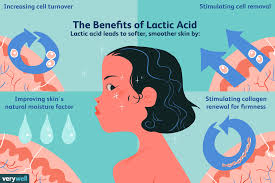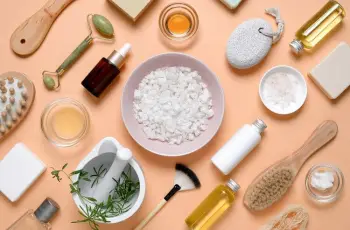
Lactic Acid in Skincare: A Two-Week Test of Sunday Riley’s Good Genes
Lactic acid is one of the most beloved alpha hydroxy acids (AHAs) in the skincare world. Milder than glycolic acid, it gently exfoliates the surface of the skin without causing intense irritation.
Derived naturally from sources like fermented milk or kefir, lactic acid helps remove dead skin cells, brighten dark spots, and smooth the appearance of fine lines and uneven texture.
So when I decided to explore AHAs, Sunday Riley’s Good Genes All-in-One Lactic Acid Treatment stood out as a perfect first pick. It’s a cult favorite and often praised by skincare experts and editors alike.
I committed to using Good Genes every evening for two weeks. My goal? To see if this best-selling product really lives up to the hype.
About My Skin
Let’s talk skin type: I have normal to oily skin, and its behavior varies with the seasons. In summer, I lean oilier. In cooler months, it tends toward normal.
I deal with uneven texture year-round and occasional clogged pores, especially now that I wear a mask when I’m out. I also notice some emerging fine lines, especially around my eyes.
On top of that, my skin has visible sun damage from teenage years spent tanning at the beach. Small freckle-like dark spots remain on my cheeks as a reminder.
I’ve always been cautious with acids due to past reactions to stronger actives like glycolic acid and retinol. I had never used lactic acid consistently before this trial.
Turning 30, with subtle signs of aging creeping in, I wanted a gentle exfoliant to refresh my skin without causing irritation. Good Genes seemed like the perfect fit.
How I Used It
I used Good Genes every night for two weeks, incorporating it into my evening routine. Here’s what my nightly regimen looked like:
Cleanse, Spritz with Maison Jacynthe Rose Petal Water, Apply Good Genes on my face and neck, Follow up with Haoma Recovery Night Cream
I applied just one pump of Good Genes nightly. Because the formula is designed to be mild and suitable for daily use, I felt comfortable applying it every evening.
First Impressions: Texture and Feel
Good Genes has a light, creamy texture that absorbs fast into the skin. It feels silky and hydrating, not sticky or greasy. It leaves behind a soft, plump finish that’s smooth to the touch.
Though I used it at night, the product layers beautifully under makeup. It gives the skin a subtle blurring effect, making it a great daytime base too.
Fragrance
The scent is a refreshing citrus-floral blend. Sunday Riley doesn’t use artificial fragrances, so the pleasant aroma comes from the natural botanicals in the formula.
It’s subtle, not overpowering, and fades quickly after application.
Key Ingredients: More Than Just Lactic Acid
Good Genes centers around lactic acid, but that’s just the beginning. Here’s a breakdown of the notable ingredients in the formula:
Lactic Acid – Gently exfoliates dead skin cells, smooths fine lines, fades discoloration, and boosts moisture.
Licorice Root Extract – Brightens dark spots and evens skin tone.
Lemongrass Extract – Helps reduce the appearance of discoloration.
Aloe Vera and Prickly Pear – Calm and hydrate irritated skin.
Arnica – Soothes inflammation and redness.
Lactic acid is the second ingredient listed, which means it’s present in high concentration. Aloe and prickly pear extracts top the list, adding hydration and soothing effects.
Arnica, lemongrass, and licorice show up later in the ingredient list, but still offer targeted skin benefits.
Formula Benefits: Clean and Conscious
The formula meets Byrdie’s standards for clean beauty. While it does contain PEGs (a controversial class of ingredients), Sunday Riley confirms they are thoroughly purified and safe.
The product is also:
Vegan, Cruelty-free, Gluten-free, Packaged in recyclable materials
If sustainability and ingredient safety matter to you, Good Genes checks several key boxes.
Results: Week-by-Week Breakdown
Week 1:
After the first few uses, my skin felt softer, plumper, and smoother. I noticed an instant improvement in hydration, especially the morning after applying it.
Fine lines under my eyes felt less noticeable when I smiled. Though not dramatic, the change was enough for me to feel more confident without makeup.
Week 2:
By the end of the second week, my skin texture was significantly more refined. Clogged pores were reduced, and my overall tone appeared more even.
Although my sun spots didn’t disappear, they appeared slightly lighter. My skin had a healthier glow and was visibly more radiant.
I didn’t experience any irritation, flaking, or redness. For someone with a sensitive skin history, that’s a big win.
Sun Sensitivity Warning
Like all AHAs, lactic acid increases your skin’s sensitivity to the sun.
Even though it’s one of the gentler acids, sun exposure should be minimized when using Good Genes. Always use broad-spectrum SPF and reapply during the day.
After a long beach day—despite diligent SPF use—I noticed a mild sunburn. So yes, this warning is serious.
Avoid combining this product with other acids, benzoyl peroxide, or retinoids. Doing so could lead to redness, peeling, or irritation.
If your skin is very sensitive, you can use Good Genes as a 15-minute wash-off mask instead of a leave-on serum.
Value: Is It Worth $85?
Originally priced at $105, Good Genes now retails for $85 per ounce. Yes, that’s a steep price tag for many.
But you’re paying for:
A refined formula with clean, science-backed ingredients
A gentle yet effective exfoliating acid
A hydrating base with real visible benefits
A serum that doubles as a makeup primer or overnight treatment
For me, it’s worth the splurge. If it continues to lighten spots and improve texture over time, I’ll absolutely repurchase.
Affordable Alternative: The Ordinary Lactic Acid
If you’re hesitant to drop $85 on a lactic acid serum, consider a great budget option:
The Ordinary Lactic Acid 5% + HA 2% Serum – Only $6.50 for one ounce.
This product contains:
Lactic acid for exfoliation
Hyaluronic acid for hydration
Tasmanian pepperberry to soothe redness
The Ordinary also offers a 10% lactic acid version for those who want a stronger exfoliating effect—still under $7.
It doesn’t have the same luxurious texture or botanical blend as Good Genes, but it delivers excellent results at a fraction of the cost.
Final Thoughts: A Clear Skin Win
Sunday Riley’s Good Genes lived up to its reputation.
In just two weeks, it improved my skin’s texture, glow, and hydration. Fine lines looked slightly softer, and my skin felt baby-smooth each morning.
It’s gentle enough for daily use, yet powerful enough to produce noticeable results.
While the price is high, the formula delivers. If you’re serious about your skincare and want to invest in a gentle, effective AHA, Good Genes is an excellent choice.
Quick Recap:
Best for: Normal, oily, or textured skin
Strengths: Smooths, brightens, and hydrates
Use at night or as a 15-minute mask for sensitive skin
Pair with SPF and avoid other acids during use
Clean, vegan, cruelty-free, and beautifully packaged


